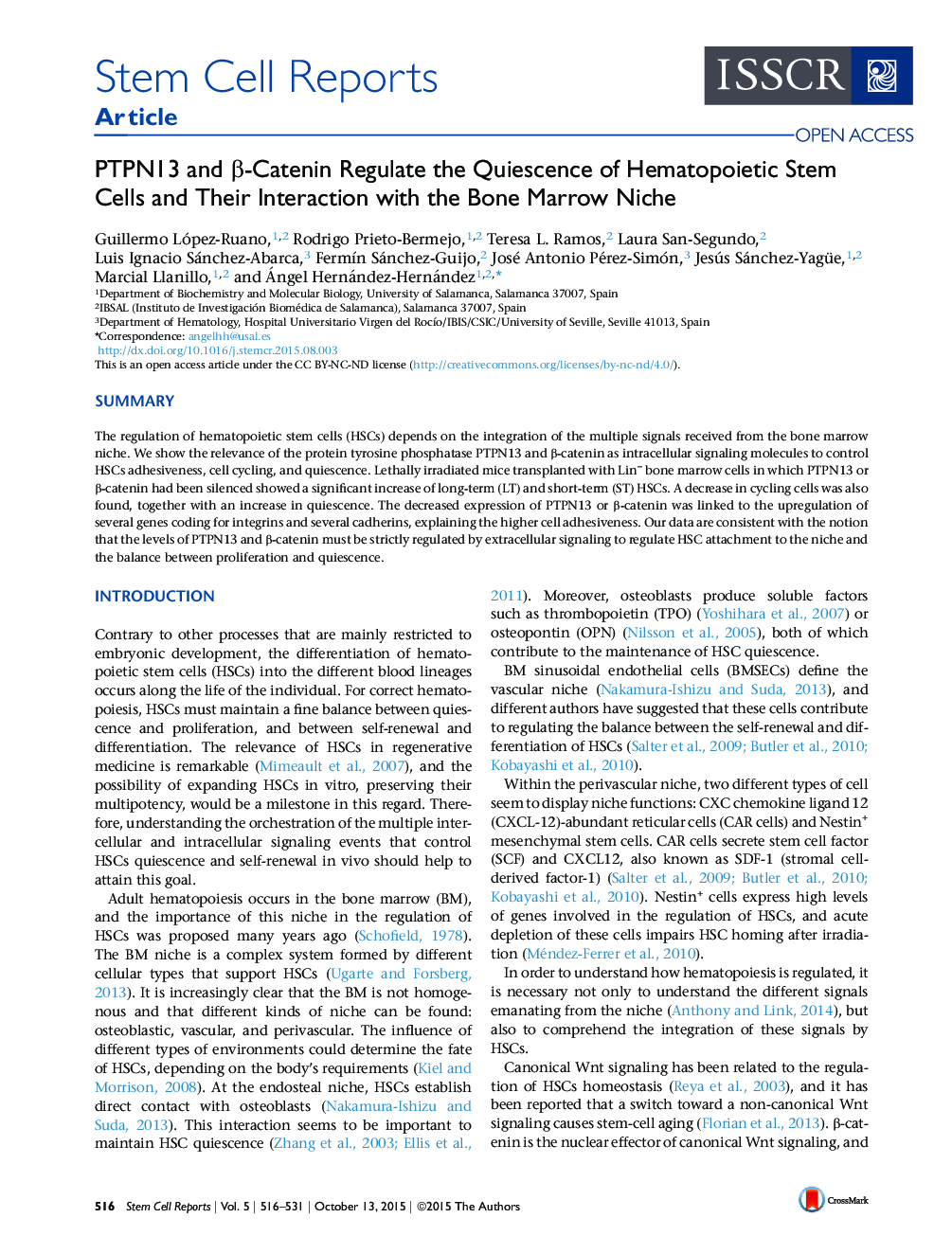| Article ID | Journal | Published Year | Pages | File Type |
|---|---|---|---|---|
| 2093420 | Stem Cell Reports | 2015 | 16 Pages |
•PTPN13 or β-catenin silencing increases LT-HSCs and ST-HSCs frequency in vivo•The cell cycling of HSPCs was decreased by PTPN13 or β-catenin downregulation•LT-HSCs and ST-HSCs quiescence was increased by PTPN13 or β-catenin downregulation•PTPN13 and β-catenin levels modulate the interaction of HSPCs with the BM niche
SummaryThe regulation of hematopoietic stem cells (HSCs) depends on the integration of the multiple signals received from the bone marrow niche. We show the relevance of the protein tyrosine phosphatase PTPN13 and β-catenin as intracellular signaling molecules to control HSCs adhesiveness, cell cycling, and quiescence. Lethally irradiated mice transplanted with Lin– bone marrow cells in which PTPN13 or β-catenin had been silenced showed a significant increase of long-term (LT) and short-term (ST) HSCs. A decrease in cycling cells was also found, together with an increase in quiescence. The decreased expression of PTPN13 or β-catenin was linked to the upregulation of several genes coding for integrins and several cadherins, explaining the higher cell adhesiveness. Our data are consistent with the notion that the levels of PTPN13 and β-catenin must be strictly regulated by extracellular signaling to regulate HSC attachment to the niche and the balance between proliferation and quiescence.
Graphical AbstractFigure optionsDownload full-size imageDownload as PowerPoint slide
